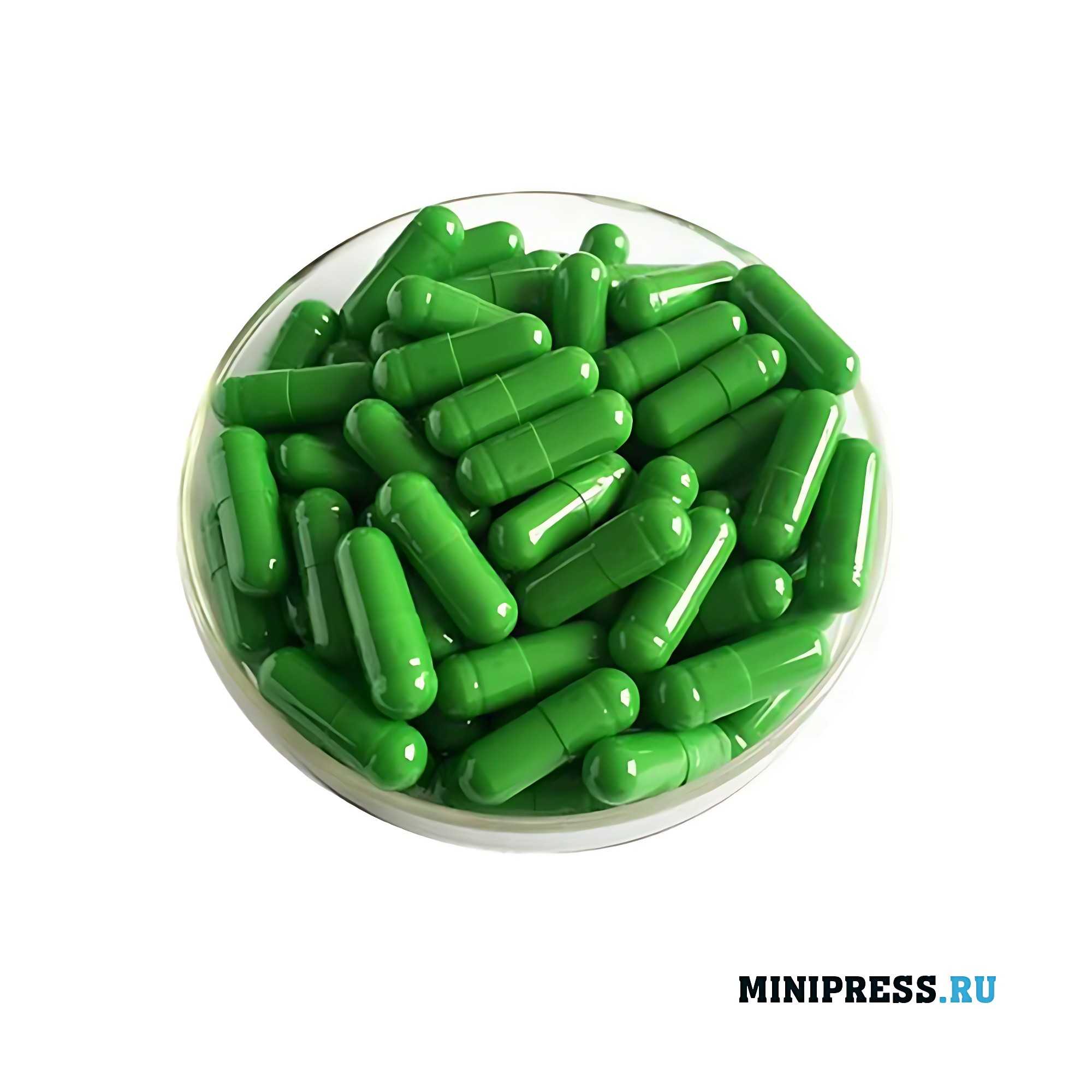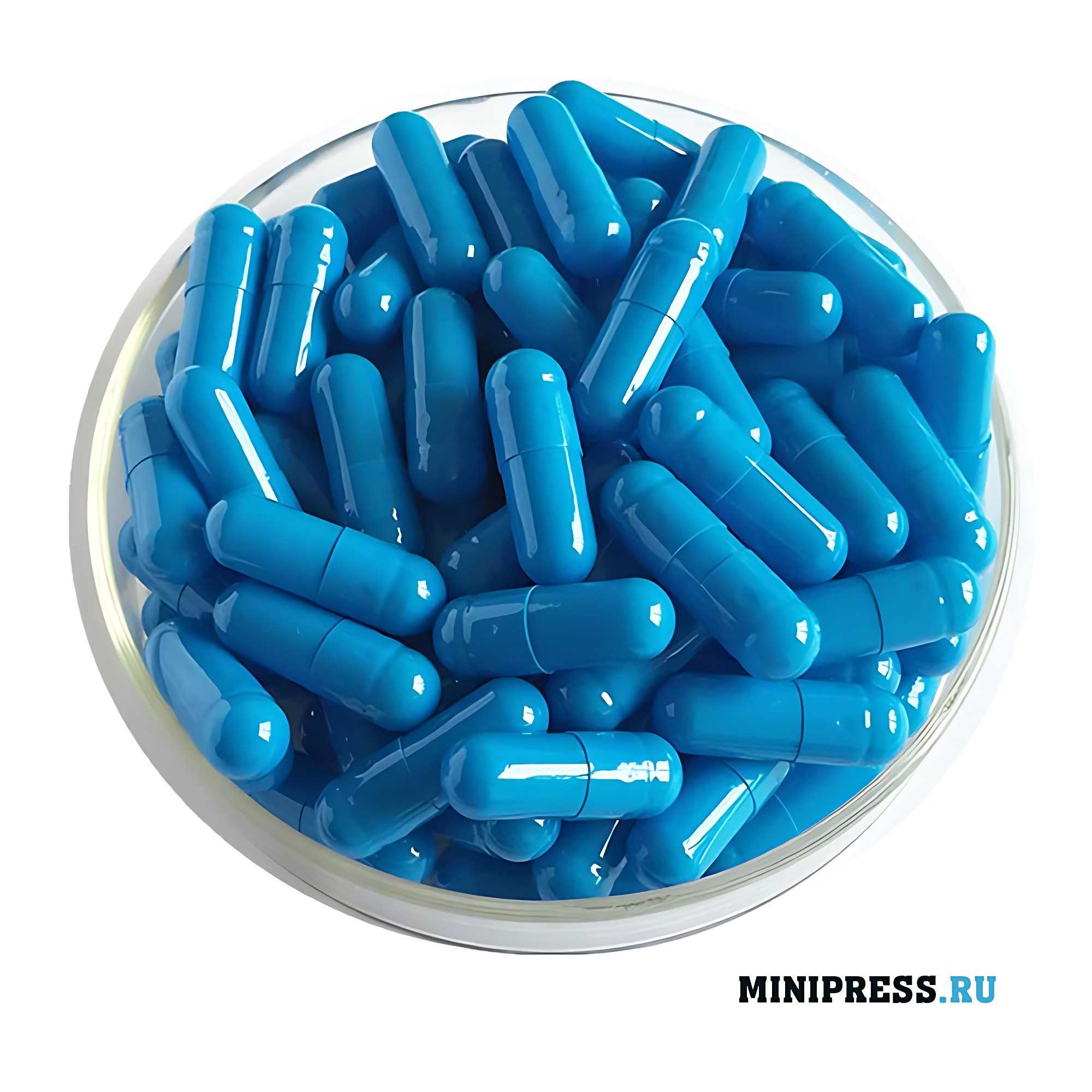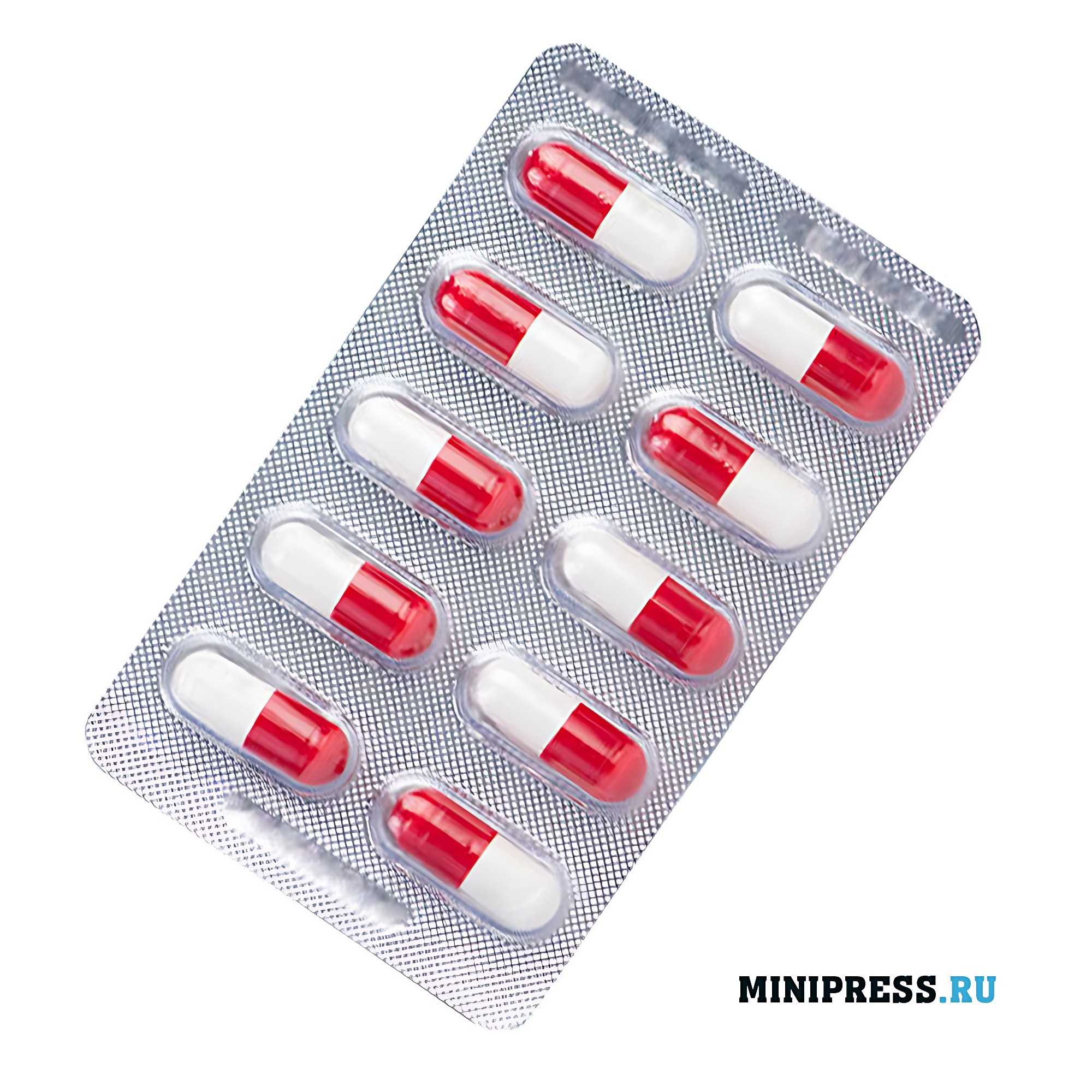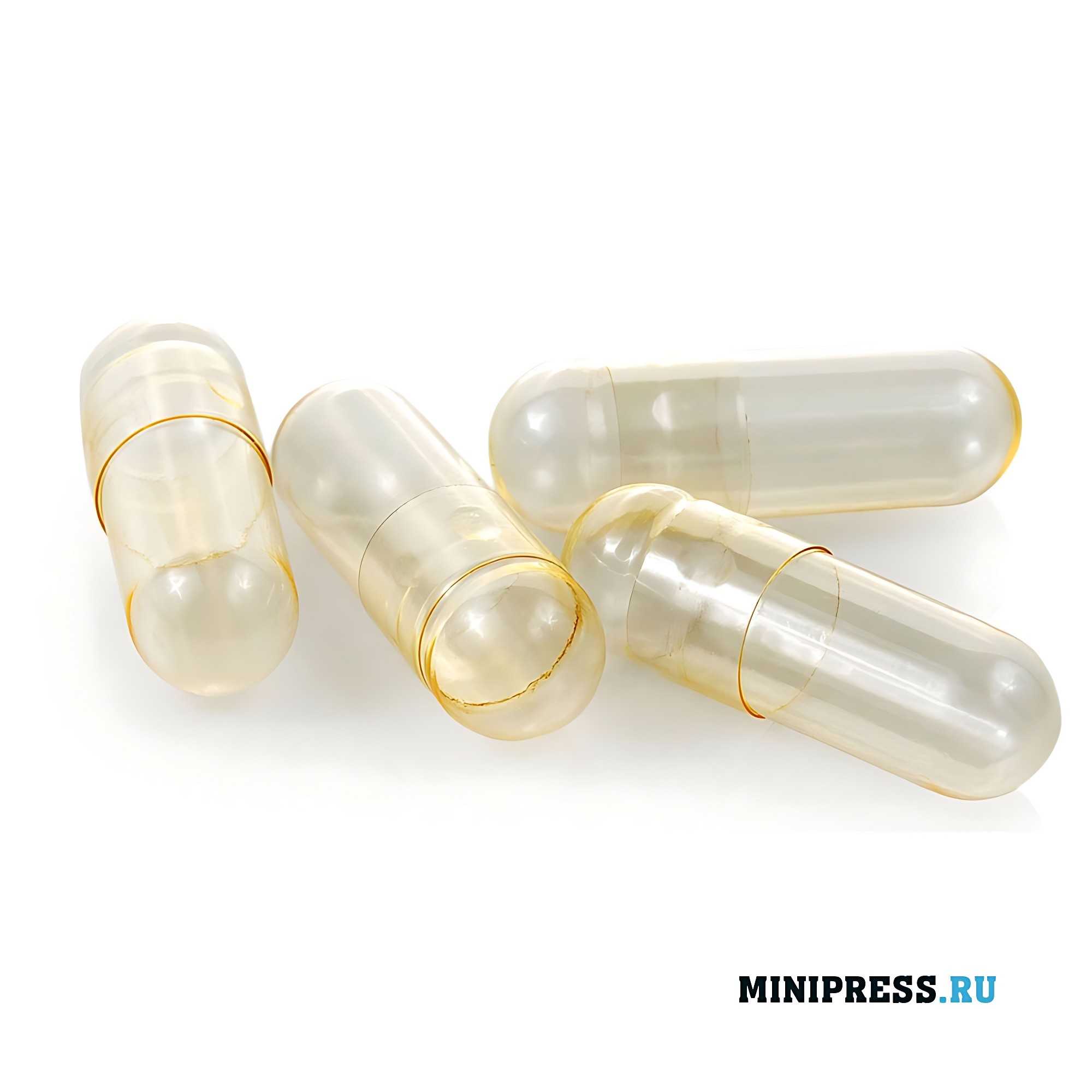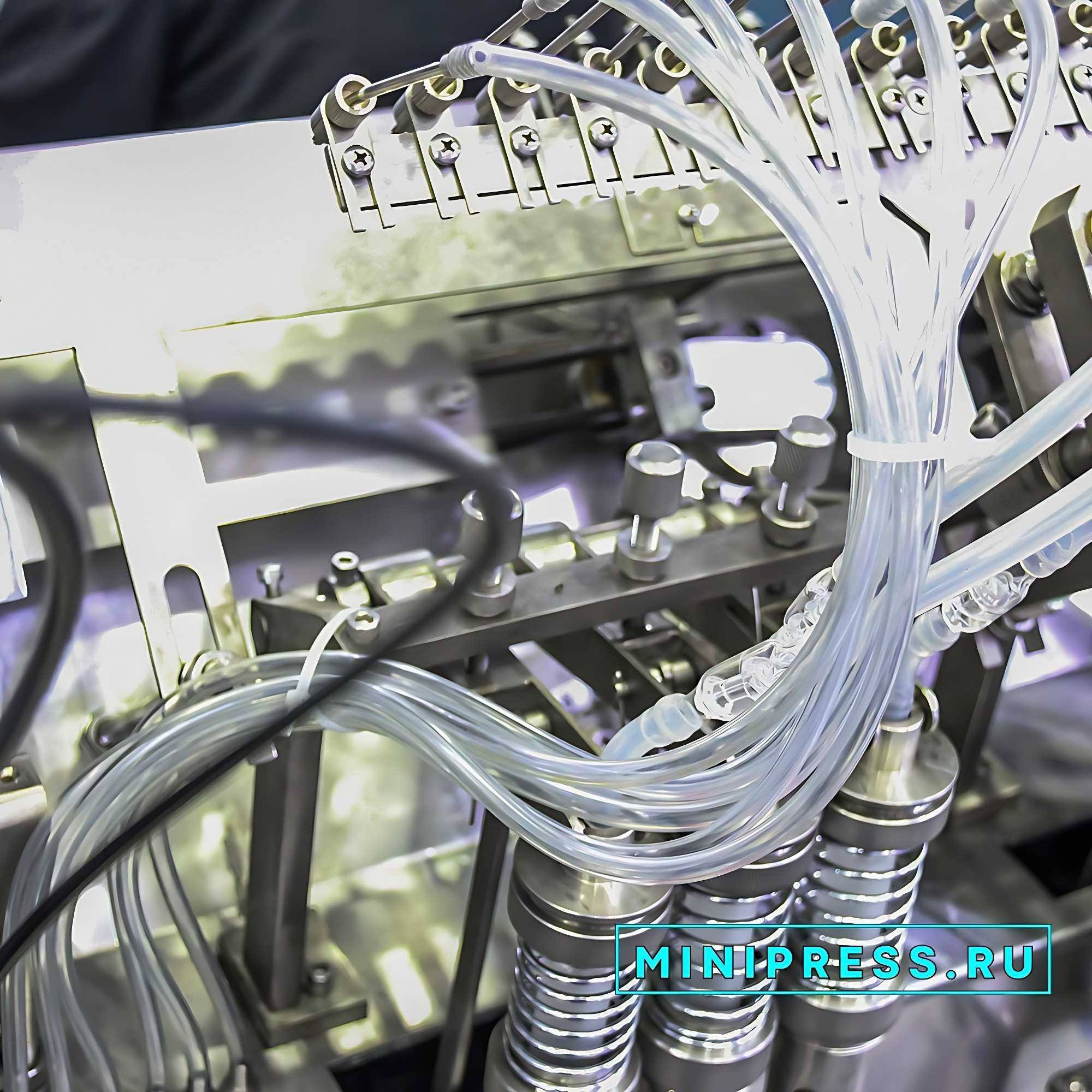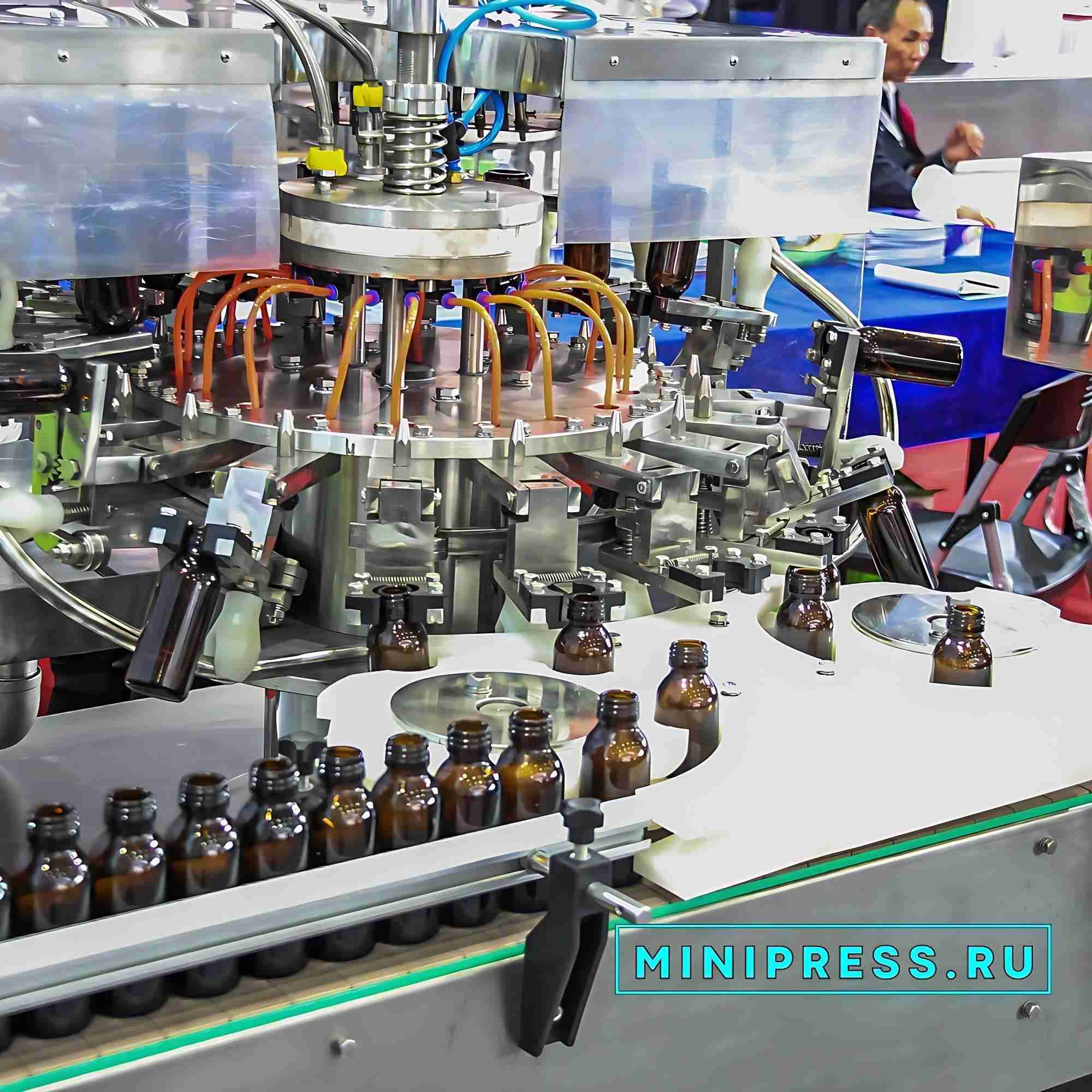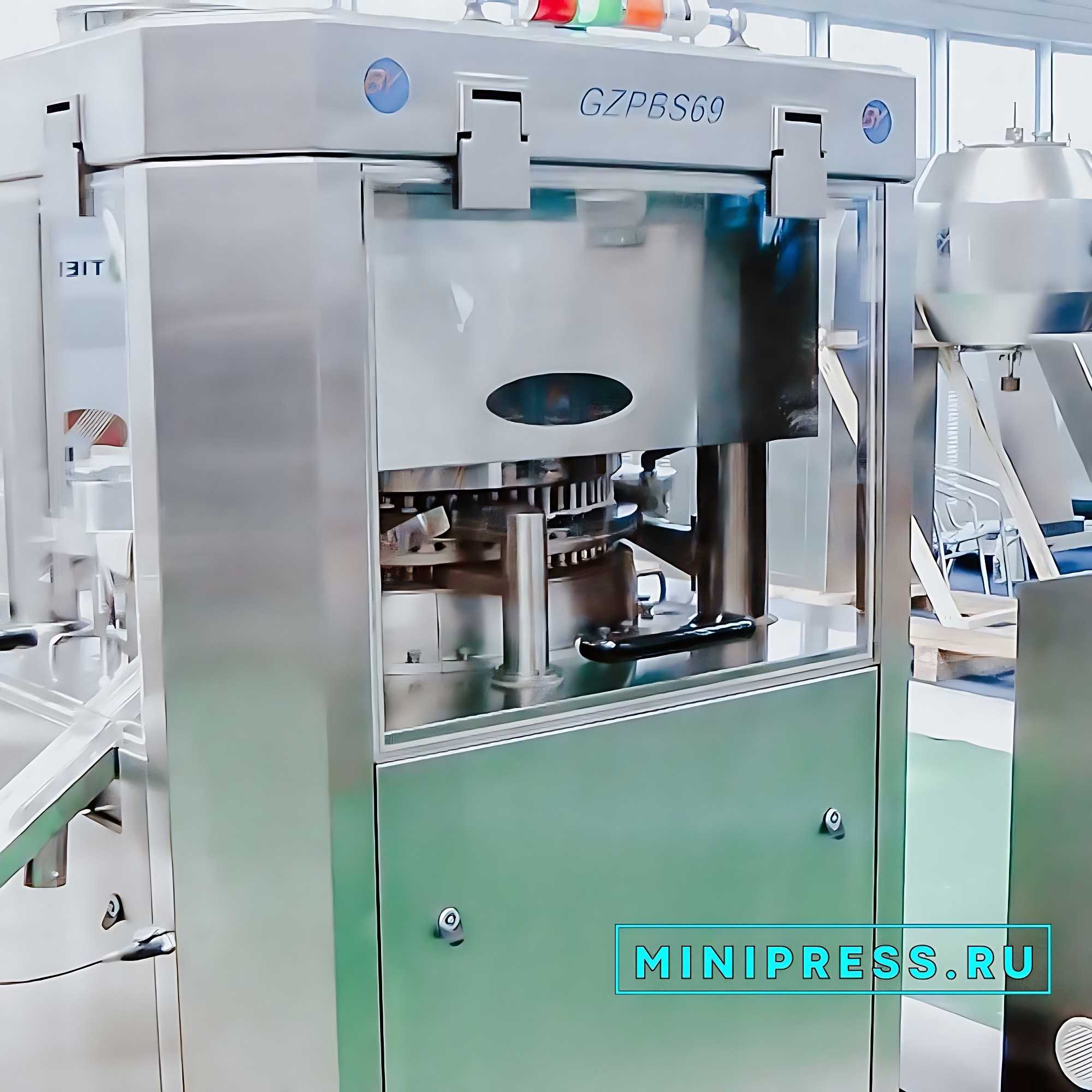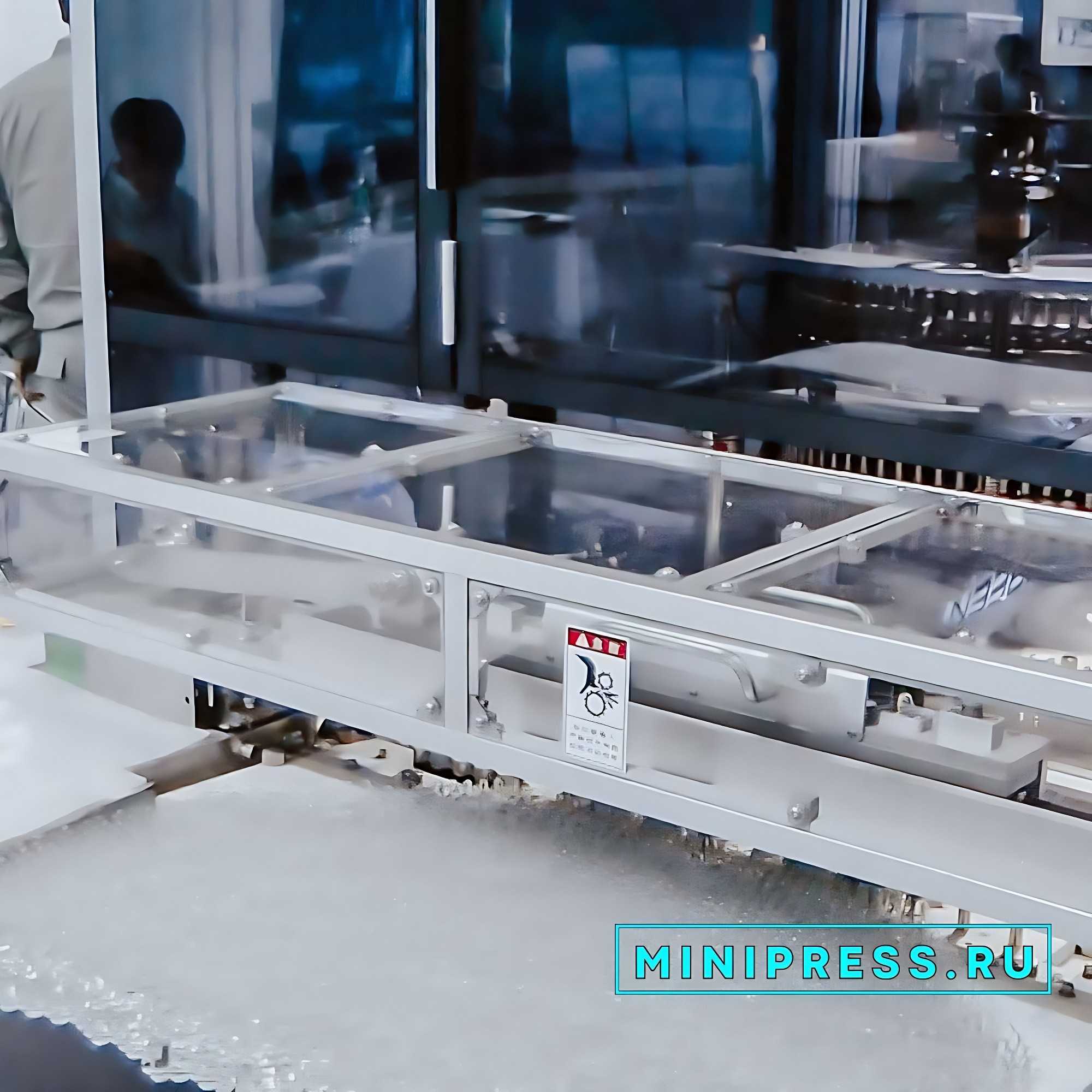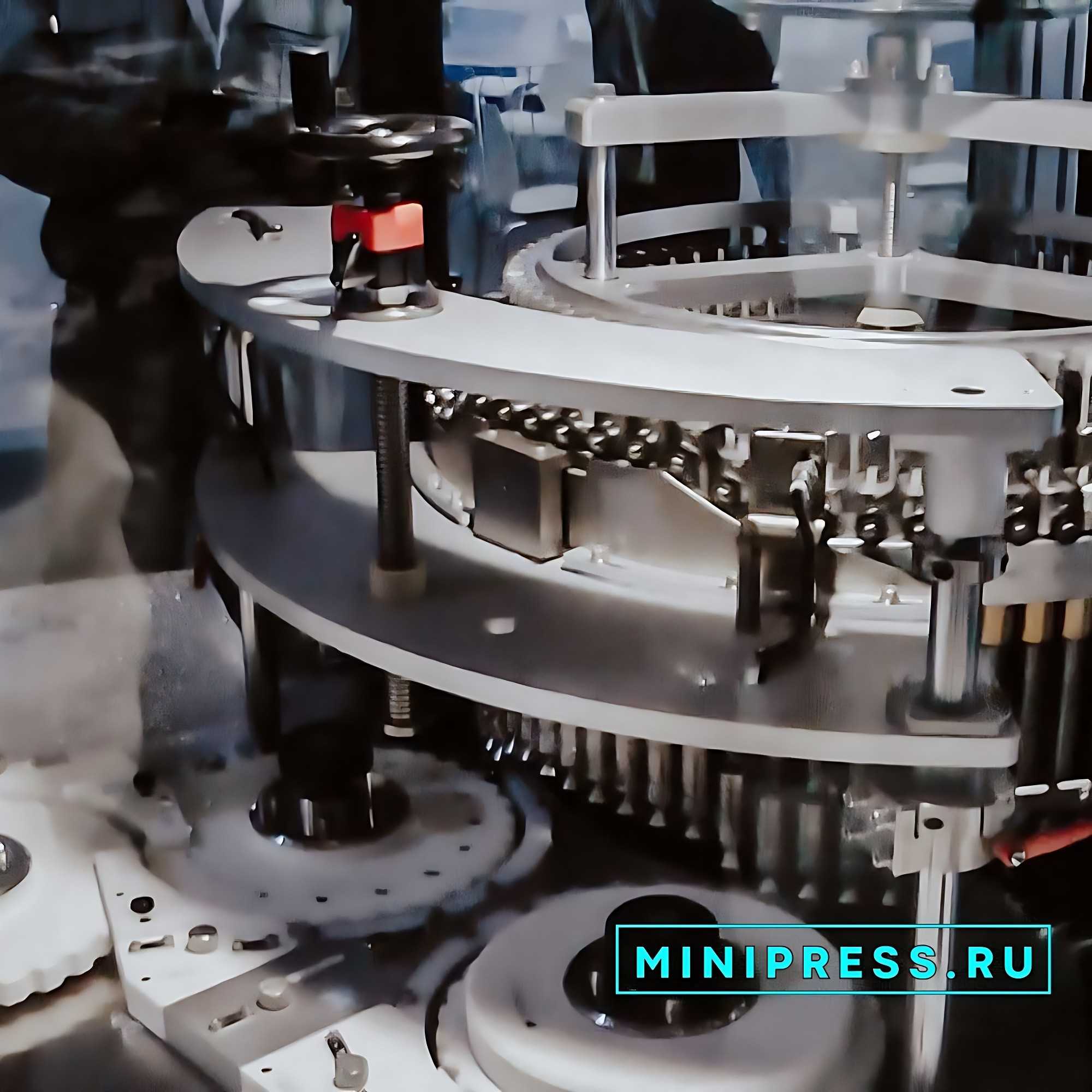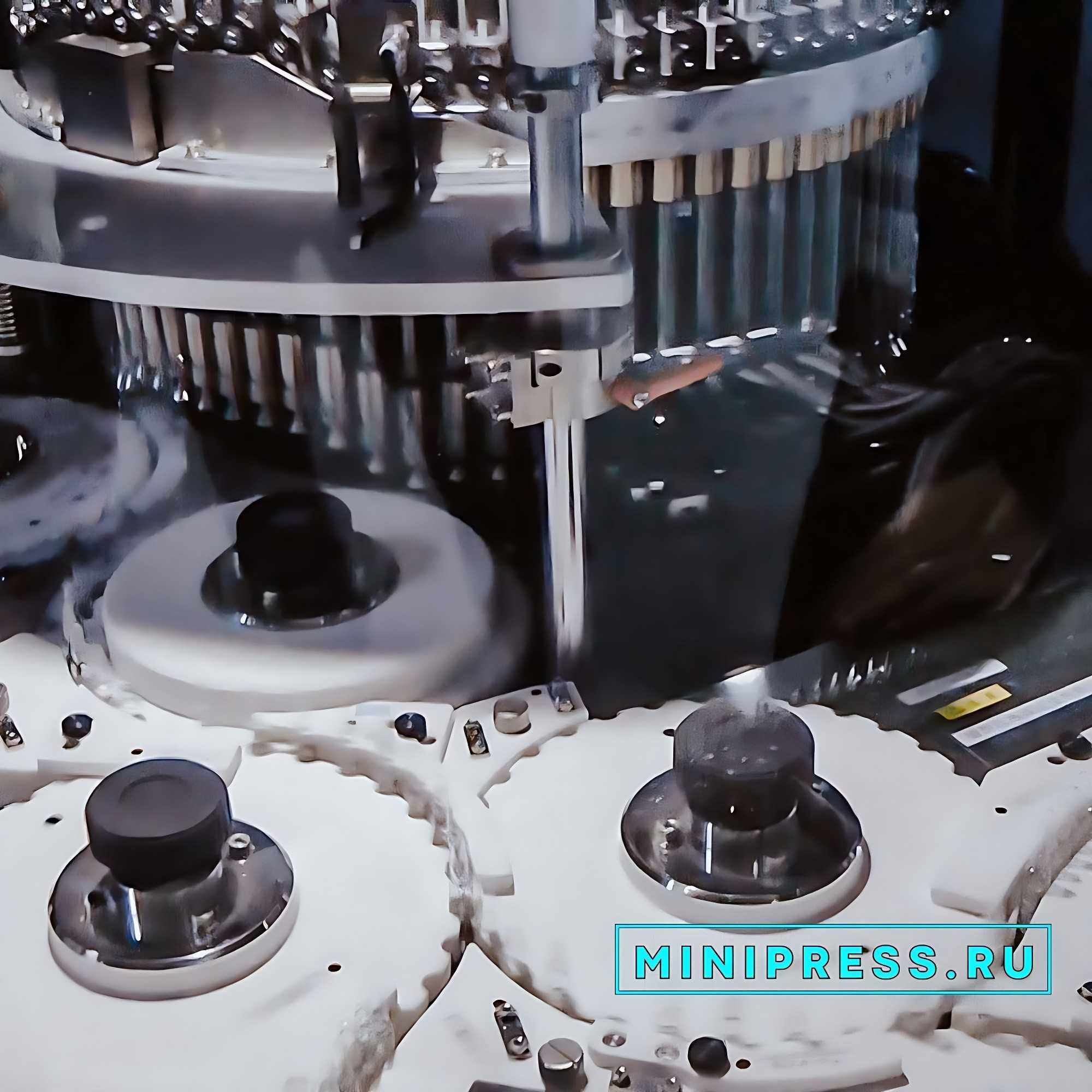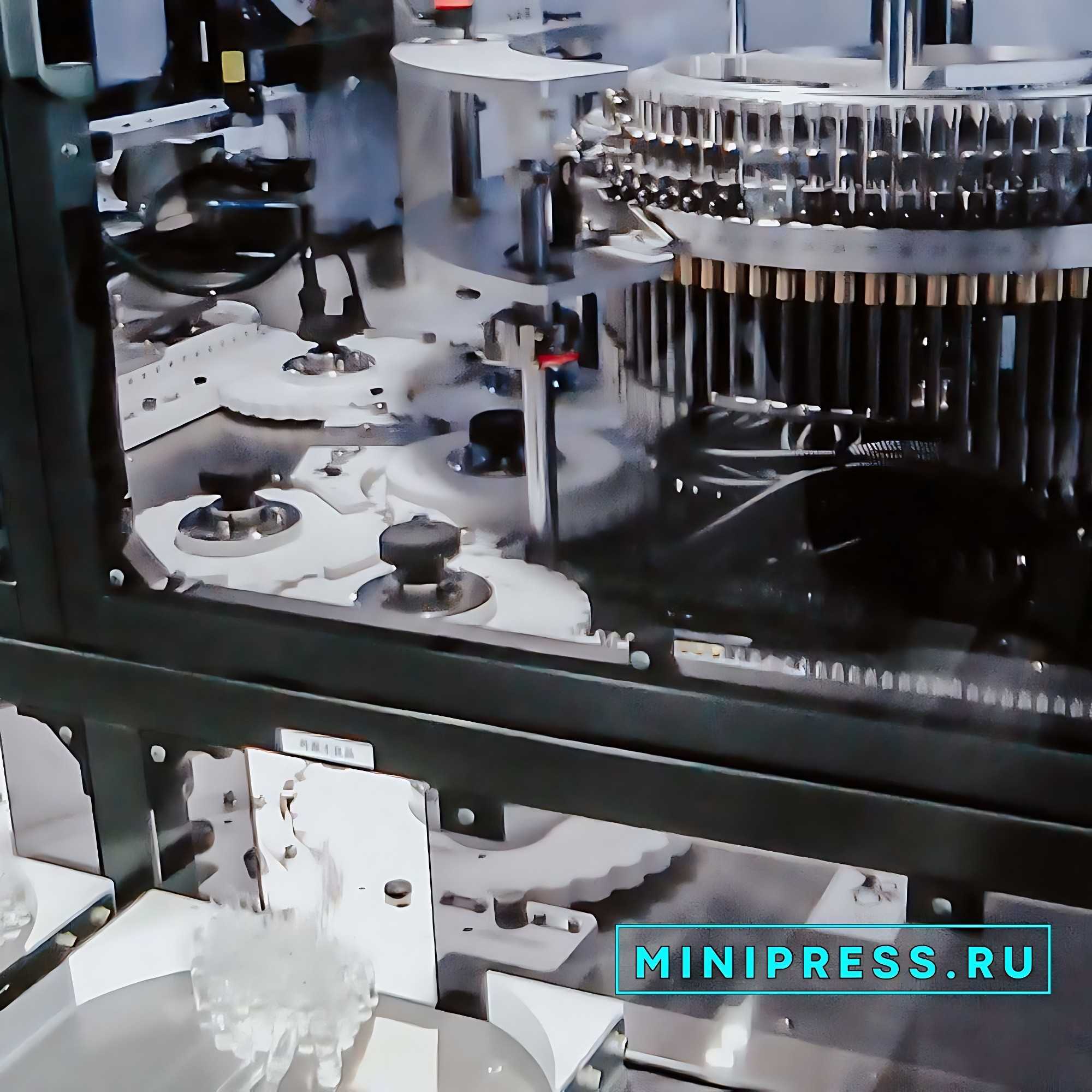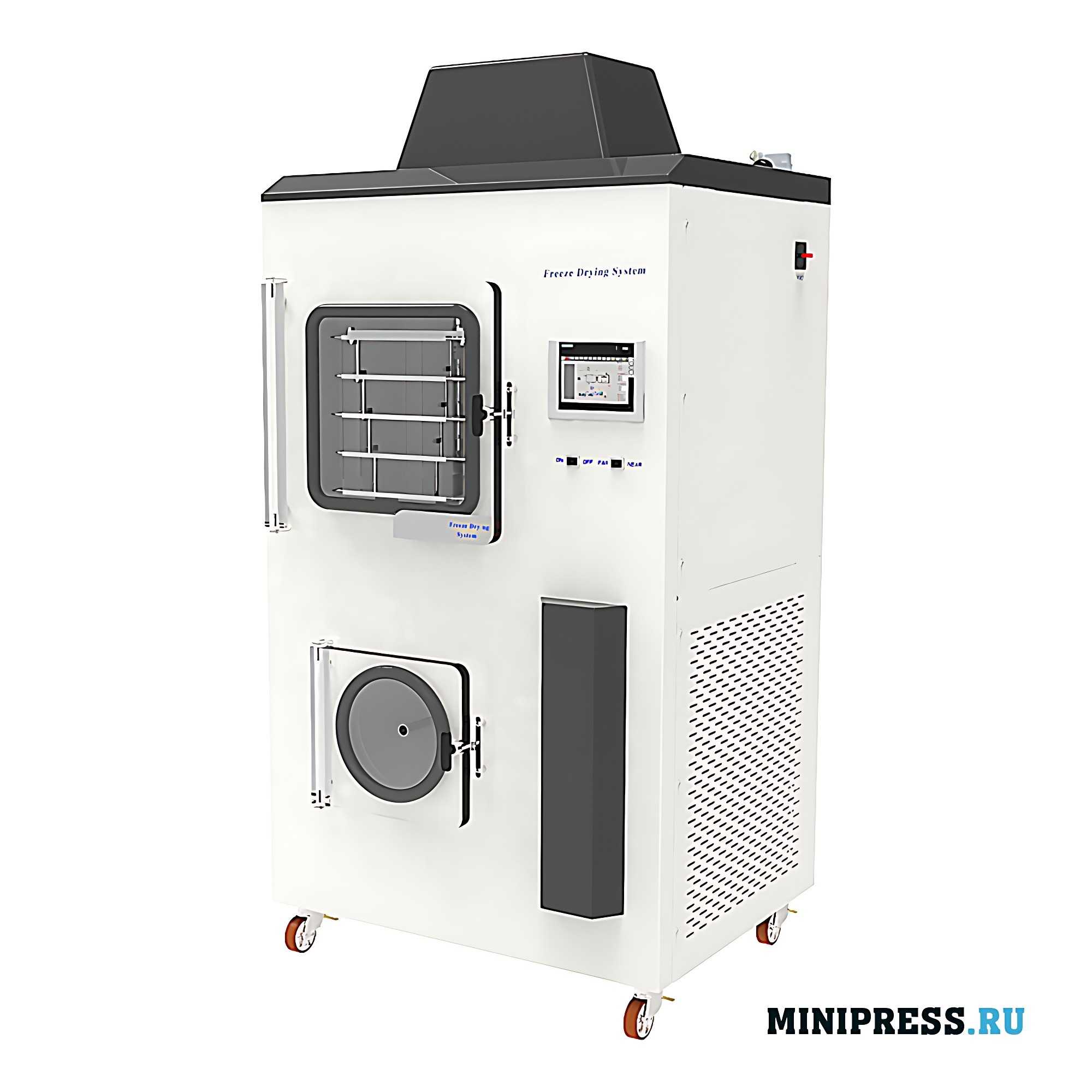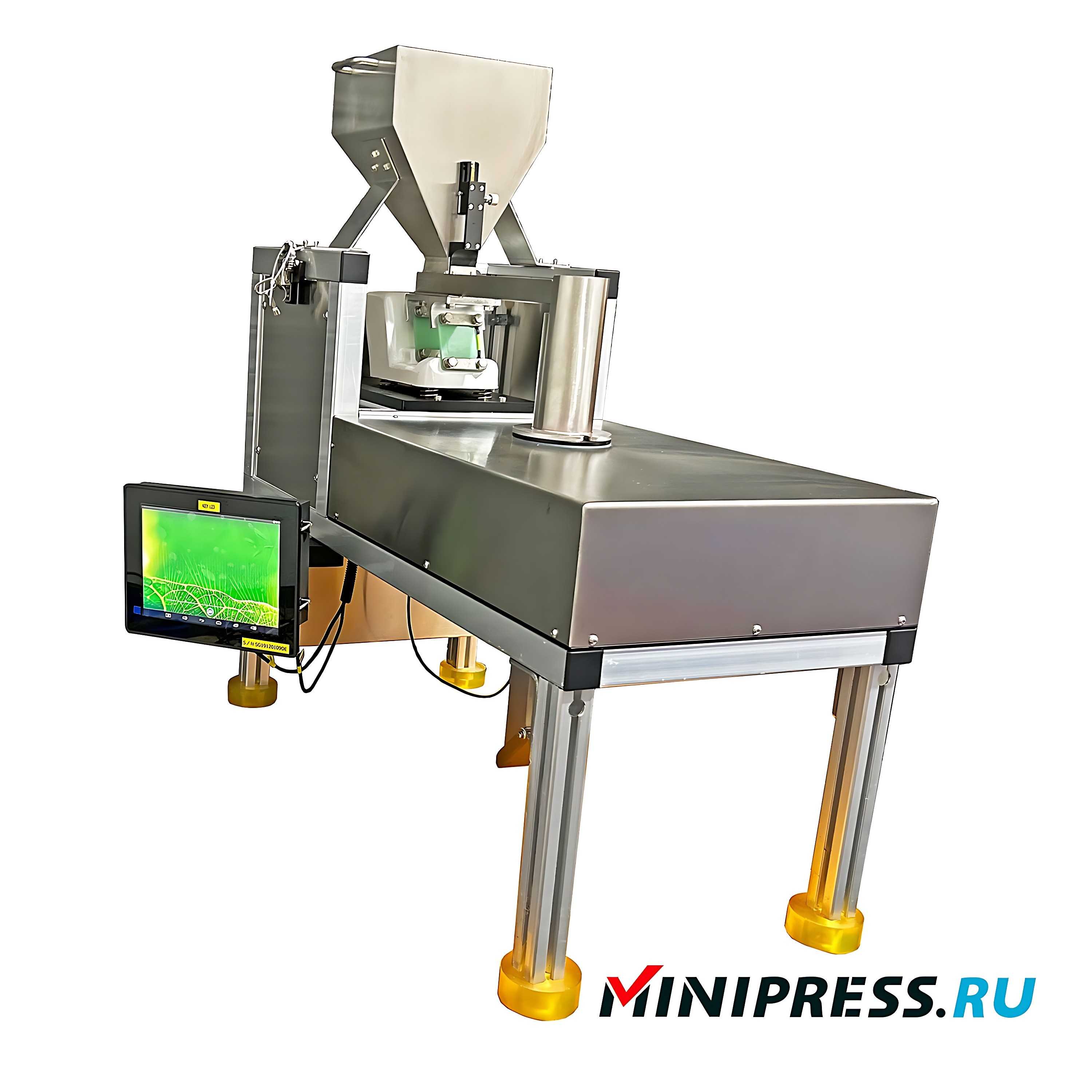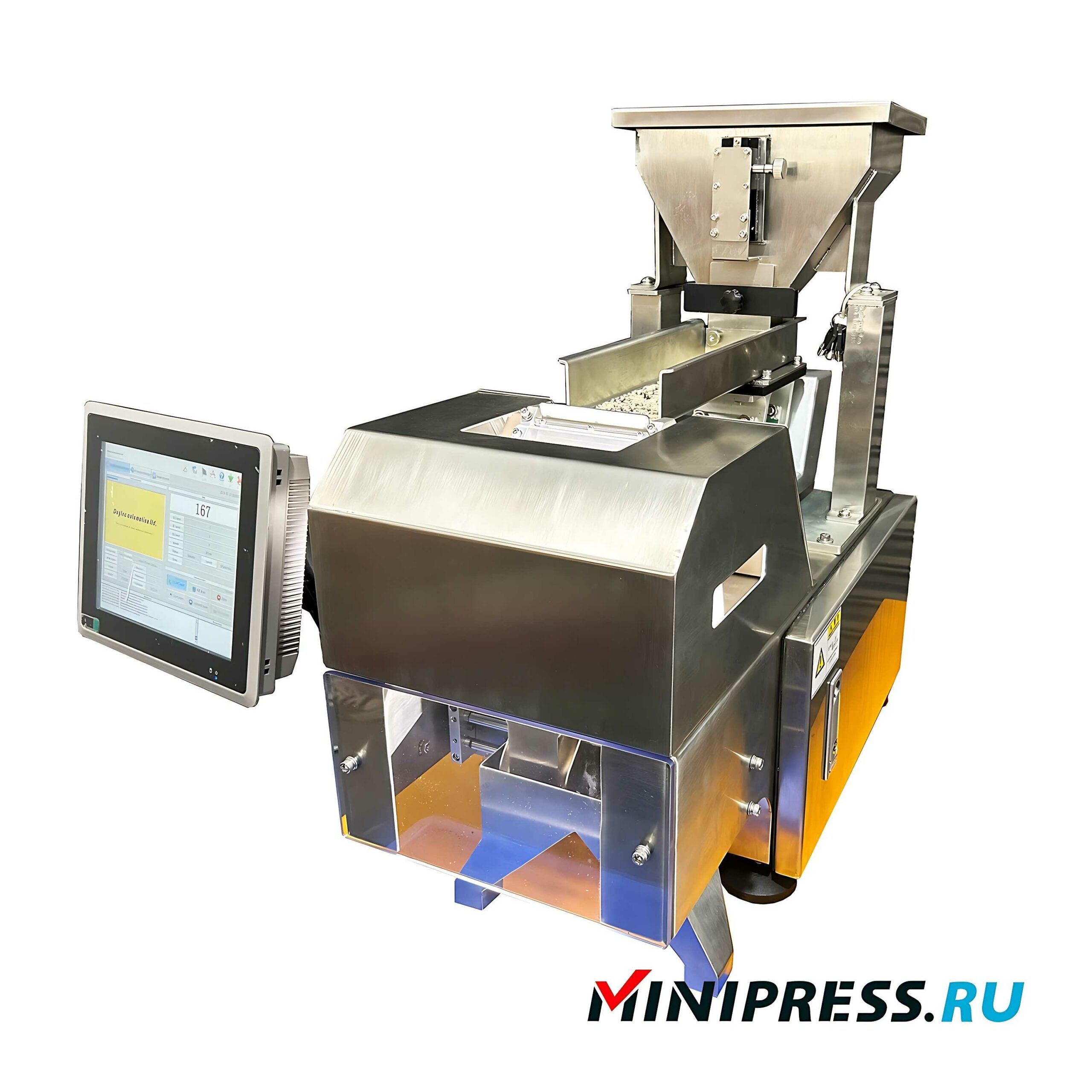 Video review of the model
Video review of the model
 Our service and customer service
Our service and customer service
Most often titanium dioxide is used as a clouding agent, less often aluminum hydroxide or calcium carbonate. In addition, the composition of gelatin capsule shells may include: water-absorbing agents – substances” allowing to prevent moisture retraction from the capsule shell by hygroscopic substances, which can be used when filling capsules. For this purpose, it is recommended to use polypeptides, oligosaccharides, starch and its derivatives, as well as some other substances; disintegrants – substances that contribute to maintaining a constant level of capsule disintegrability during long-term storage (since gelatin, being a product of collagen processing, has the property of “aging”), as well as achieving a rapid release of the contents of the dosage form. Amino acids, proteins, casein, croscarmellose, tweens, sodium hydrogen carbonate can be used in this capacity. To achieve rapid disintegration of capsule shells, the technology of dispersing some gases (oxygen, nitrogen, carbon monoxide, argon, etc.) into the gelatin mass can also be applied, which, among other things, allows saving the shell material. Also noteworthy is the original method of treatment of gelatin itself with amber anhydride proposed by Japanese scientists; sliding agents – substances that prevent possible sticking of capsules. Usually D-mannite, D-sorbitol, xylitol are used (relevant primarily for soft capsules sold in countries with hot climates, and when it is impossible to comply with the rules of storage of this dosage form).
Other additives may be added to the composition of gelatin capsule shells. As already noted, hard capsules are designed for dosing loose powdery, granular and microgranular substances. They have the shape of a cylinder with hemispherical ends and consist of two parts: the body (body) and the cap; which should freely enter one into the other. General information on capsules was given in section 3.4. In this section, the technology of production of hard gelatin capsules and the equipment used to produce them will be discussed. The steps in the production of hard gelatin capsules are as follows: preparation of the gelatin mass; manufacture of hard gelatin capsule shells; and filling of hard gelatin capsules.
 Pharmaceutical Glossary
Pharmaceutical Glossary
 Technical specifications
Technical specifications
There are two types of gelatin: acid gelatin A and alkaline gelatin B, which differ in some physical and chemical properties. Usually in the manufacture of pharmaceutical capsules use mixtures of gelatin A and B, as it allows to obtain masses for the manufacture of capsule shells with the most optimal rheological characteristics (in particular, in terms of strength, viscosity, pH, iron content, etc.). Gelatin is easily and quickly digested by the human body even with severe gastrointestinal disorders, non-toxic and has no adverse reactions. A characteristic property of gelatin (from Latin gelare – to solidify) is the ability of its solutions to gel when cooled, forming a solid gel. Production of gelatin capsules is based on this property of gelatin. To obtain a stable capsule shell, the composition of the gelatin base may include various auxiliary substances approved for use: plasticizers, film formers, stabilizers, preservatives, correcting agents, dyes and pigments. In order to improve structural and mechanical properties and to ensure appropriate elasticity, increase strength and reduce brittleness of shells, plasticizers are introduced into the composition of gelatin mass. The most popular plasticizers are glycerin, sorbitol, PEO-400, polyethylene glycol, polypropylene, polyethylene sorbitol (3-15%) with oxyethylene (4-40%), hexanthropol and others. For the manufacture of hard capsules gelatin mass should contain a small amount of plasticizers (0.3-1.0 %), for soft – their amount increases to 20-45 %.
In some cases, gelatin capsules become more stable with partial or complete replacement of glycerol in the shell with sorbitol, PEO-400 or other plasticizers.
Among the disadvantages of gelatin capsules can be noted their high sensitivity to moisture, which requires compliance with certain conditions of storage of capsules. Therefore, sometimes gelatin capsules are coated with special coatings – film formers, which reliably protect the shells from moisture, while not preventing their rapid destruction in the stomach.
 Additional information
Additional information
Such film formers include para-aminobenzoate sugars and cellulose amino derivatives, which improve the moisture resistance of gelatin capsules. Another way to overcome the moisture sensitivity of gelatin capsules is to use zein or other moisture-resistant film-forming agents instead of gelatin. For encapsulation of complex compositions of vitamins Japanese researchers proposed a method of obtaining “double” capsules: water-soluble vitamins are covered with a film of wax-like substances, and then a hydrophilic film of gelatin. The gelatin mass is a favorable environment for the reproduction of microorganisms. To ensure antimicrobial resistance of shells in the composition of the mass introduced preservatives: a mixture of salicylic acid (up to 0.12%) with potassium (sodium) metabisulfite (up to 0.2%), benzoic acid and sodium benzoate (0.05-0.1%), nipagin (0.1-0.5%)” To give capsules an attractive commercial appearance or protect the active substances from photochemical reactions, the composition of the gelatin mass introduced corrective auxiliary substances. Sometimes aromatizing substances (essential oils, essences, ethyl-vanillin 0.1%) are added to the gelatin base to give capsules a pleasant smell. The addition of sweet substances (sugar syrup, sucrose, glucose, etc.) improves the taste of capsules and reduces the unpleasant sensation when swallowing. Currently, all capsules (with rare exceptions) are colored to give them a more aesthetic appearance. For this purpose, coloring agents are introduced into the gelatin mass. Different coloring is also convenient for the release of different names of drugs in the form of capsules, as it allows you to distinguish products by color. As dyes can be used substances of natural origin (carminic acid, chlorophyll, beta-carotene, etc.), the low toxicity of which allows their use without restrictions in most countries, inorganic pigments (yellow, red and black iron oxide, titanium dioxide), as well as organic dyes approved for medical use. The amount of dyes in one capsule, as a rule, does not exceed 50 mcg. Capsules intended to be filled with photosensitive substances should be opaque. For this purpose, obscuring agents are used – substances that make it possible to obtain opaque capsules due to their ability to form a stable fine suspension in the gelatin mass.
Order status tracking
To what address to send you samples of bottles and caps to send them to the factory ? Regards Alexander. 08/05/2024 16:29
Good day, Alexander We received the same question on WhatsApp and replied there as well. Kindly provide the shipment number for tracking purposes. Thank you. 08/05/2024 16:29
The BB-152 liquid filling machine arrived from you today, remember us ? Where's the paperwork? 08/05/2024 16:39
{The original shipping documents will be delivered to Bruges closer to evening. Please send the signed copies to us. 08/05/2024 16:39
Mixer with paddle for powders CX-100 what is the exact packing size ? 08/05/2024 16:49
Benjamin, Hello! Packing dimensions 1200x640x1000 mm, packing weight 250 kg. Please let me know when you receive the shipment. 08/05/2024 16:50
I'm waiting to get my XL-12 plastic bottle filling and capping machine to Nice, then I want to buy an automatic capsule machine model GN-28 08/05/2024 16:59
Good afternoon, Evelyn! On the first question - the shipment will arrive in Nice tomorrow by lunchtime. On the second question - the model GN-28 will be processed under a new contract ? Contact the office. 08/05/2024 17:02
Remember me? There's a delivery in the Istanbul 08/05/2024 17:09
Aiden, Hello! We remember all our customers. your blister honey filling machine model MN-82 will be tomorrow until 12:30 in Istanbul . 08/05/2024 17:09
To what address to send you samples of bottles and caps to send them to the factory ? Regards Zoe. 08/05/2024 17:19
Good day, Zoe We received the same question on WhatsApp and replied there as well. Kindly provide the shipment number for tracking purposes. Thank you. 08/05/2024 17:20
Mixer with paddle for powders CX-100 what is the exact packing size ? 08/05/2024 17:29
Noah, Hello! Packing dimensions 1200x640x1000 mm, packing weight 250 kg. Please let me know when you receive the shipment. 08/05/2024 17:31
I'm waiting to get my XL-12 plastic bottle filling and capping machine to York, then I want to buy an automatic capsule machine model GN-28 08/05/2024 17:39
Good afternoon, Matthew! On the first question - the shipment will arrive in York tomorrow until 15:30. On the second question - the model GN-28 will be processed under a new contract ? Contact the office. 08/05/2024 17:40
Remember me? There's a delivery in the Luzern 08/05/2024 17:49
Jayden, Hello! We remember all our customers. your blister honey filling machine model MN-82 will be tomorrow by lunchtime in Luzern . 08/05/2024 17:50
Hello, is it possible to buy your blistering machine for tablets and capsules MN-80 1 piece with delivery to Arlington ( Europe) ? How much time for delivery ? 08/05/2024 17:59
Michael, hello! We have many customers from your city. Delivery to this region is made by EMC. 08/05/2024 18:03
- EQUIPMENT FOR WASHING AND STERILIZING BOTTLES
- EQUIPMENT FOR COATING TABLETS
- MACHINES FOR FORMING AND FILLING PLASTIC AMPOULES
- EQUIPMENT FOR FILLING HARD GELATIN CAPSULES WITH POWDER
- EQUIPMENT FOR PRINTING LOGO ON TABLETS AND CAPSULES
- EQUIPMENT FOR POLISHING AND DEDUSTING TABLETS AND CAPSULES
- MACHINES FOR THE PRODUCTION OF SUPPOSITORIES
- EQUIPMENT FOR COUNTING AND PACKAGING TABLETS AND CAPSULES IN BOTTLES
- EQUIPMENT FOR FILLING CREAMS AND SEALING PLASTIC TUBES
- EQUIPMENT FOR PACKING POWDERS INTO VIALS
- EQUIPMENT FOR FILLING AND SEALING GLASS AMPOULES
- HIGH-PRECISION DOSING MACHINES POWDER FILLING MACHINES
- SPRAY DRYING EQUIPMENT FOR SUSPENSIONS
- EQUIPMENT FOR PACKAGING TABLETS AND CAPSULES IN PLASTIC BOTTLES
- EQUIPMENT FOR THE PRODUCTION OF TABLETS
- BOTTLE FILLING AND CAPPING EQUIPMENT
- AUTOMATIC EQUIPMENT FOR REMOVING TABLETS AND CAPSULES FROM BLISTERS
- EQUIPMENT FOR EFFICIENT MIXING OF POWDERS
- EQUIPMENT FOR HOMOGENIZING CREAMS AND OINTMENTS
- EQUIPMENT FOR SCREW FEEDING OF POWDERS
- EQUIPMENT FOR VACUUM TRANSPORTATION OF POWDERS
- POWDER GRANULATION EQUIPMENT
- EQUIPMENT FOR AUTOMATIC BOTTLE FEEDING FOR FILLING LINES
- AUTOMATIC PHARMACEUTICAL CENTRIFUGES
- EQUIPMENT FOR WRAPPING CARDBOARD BOXES WITH CELLOPHANE
- AUTOMATIC EQUIPMENT FOR SELF-ADHESIVE LABELS ON PACKAGING
- AUTOMATIC EQUIPMENT FOR BLISTER PACKAGING
- EQUIPMENT FOR PACKAGING BULK MATERIALS IN PLASTIC BAGS
- EQUIPMENT FOR WEIGHT CONTROL AND SORTING OF CARDBOARD BOXES WITH MEDICINE
- AUTOMATIC CARTONING MACHINES
- EQUIPMENT FOR METAL DETECTOR IN GELATIN CAPSULES AND TABLETS
- EQUIPMENT FOR PACKING TEA INTO TEA BAGS WITH THREAD AND LABEL
- EQUIPMENT FOR VACUUM PACKAGING IN PLASTIC BAGS
- EQUIPMENT FOR FILLING LIQUIDS IN PLASTIC AND METAL BARRELS
- EQUIPMENT FOR INDUCTION SEALING OF ALU FOIL BOTTLES
- EQUIPMENT FOR PACKAGING FOOD PRODUCTS IN DOY-PACK PACKAGES
- EQUIPMENT FOR FILLING AND PACKAGING HERBAL TINCTURES
- EQUIPMENT FOR PACKAGING PRODUCTS IN A FLOW PACK
- EQUIPMENT FOR PACKAGING TABLETS IN STRIPS AND TUBES
- EQUIPMENT FOR THE MANUFACTURE AND PACKAGING OF WET ALCOHOL WIPES
- EQUIPMENT FOR APPLYING THE EXPIRATION DATE AND BATCH NUMBER TO PRODUCTS
- FLOW-PACK PACKAGING MACHINES
- DESKTOP EQUIPMENT FOR LIQUID DOSING
- MACHINES PRINTING EXPIRATION DATE AND LOT NUMBER
- PERISTALTIC PUMPS DISPENSERS
- EQUIPMENT FOR THE PRODUCTION OF FISHING BOILIES
- MANUAL EQUIPMENT FOR FILLING GELATIN CAPSULES WITH POWDER
- SEMI-AUTOMATIC EQUIPMENT FOR FILLING GELATIN CAPSULES
- EQUIPMENT FOR MIXING LIQUIDS WITH MICROWAVE HEATING
- EQUIPMENT FOR VIBRATING SIEVING OF POWDERS
- SEMI-AUTOMATIC EQUIPMENT FOR BLISTER PACKAGING
- EQUIPMENT FOR POWDERING PHARMA RAW MATERIALS
- EQUIPMENT FOR AUTOMATIC DOSING OF CREAMS AND OINTMENTS
- DESKTOP EQUIPMENT FOR MIXING POWDERS
- DESKTOP EQUIPMENT FOR HIGH-SPEED EMULSION PRODUCTION
- EQUIPMENT FOR LABORATORY TESTING OF MEDICINES
- BOTTLE FILLING AND CAPPING EQUIPMENT
- MACHINES FOR FORMING AND FILLING PLASTIC AMPOULES
- EQUIPMENT FOR PACKING POWDERS INTO VIALS
- EQUIPMENT FOR FILLING HARD GELATIN CAPSULES WITH POWDER
- EQUIPMENT FOR POLISHING AND DEDUSTING TABLETS AND CAPSULES
- EQUIPMENT FOR COATING TABLETS
- EQUIPMENT FOR FILLING AND SEALING GLASS AMPOULES
- MACHINES FOR THE PRODUCTION OF SUPPOSITORIES
- EQUIPMENT FOR COUNTING AND PACKAGING TABLETS AND CAPSULES IN BOTTLES
- EQUIPMENT FOR THE PRODUCTION OF TABLETS
- AUTOMATIC EQUIPMENT FOR REMOVING TABLETS AND CAPSULES FROM BLISTERS
- EQUIPMENT FOR PACKAGING TABLETS AND CAPSULES IN PLASTIC BOTTLES
- EQUIPMENT FOR WASHING AND STERILIZING BOTTLES
- SPRAY DRYING EQUIPMENT FOR SUSPENSIONS
- EQUIPMENT FOR PRINTING LOGO ON TABLETS AND CAPSULES
- HIGH-PRECISION DOSING MACHINES POWDER FILLING MACHINES
- EQUIPMENT FOR FILLING CREAMS AND SEALING PLASTIC TUBES
- EQUIPMENT FOR VACUUM TRANSPORTATION OF POWDERS
- POWDER GRANULATION EQUIPMENT
- AUTOMATIC PHARMACEUTICAL CENTRIFUGES
- EQUIPMENT FOR HOMOGENIZING CREAMS AND OINTMENTS
- EQUIPMENT FOR EFFICIENT MIXING OF POWDERS
- EQUIPMENT FOR AUTOMATIC BOTTLE FEEDING FOR FILLING LINES
- EQUIPMENT FOR SCREW FEEDING OF POWDERS
- EQUIPMENT FOR INDUCTION SEALING OF ALU FOIL BOTTLES
- EQUIPMENT FOR PACKAGING TABLETS IN STRIPS AND TUBES
- AUTOMATIC EQUIPMENT FOR SELF-ADHESIVE LABELS ON PACKAGING
- EQUIPMENT FOR WRAPPING CARDBOARD BOXES WITH CELLOPHANE
- EQUIPMENT FOR APPLYING THE EXPIRATION DATE AND BATCH NUMBER TO PRODUCTS
- EQUIPMENT FOR METAL DETECTOR IN GELATIN CAPSULES AND TABLETS
- EQUIPMENT FOR PACKAGING FOOD PRODUCTS IN DOY-PACK PACKAGES
- FLOW-PACK PACKAGING MACHINES
- EQUIPMENT FOR THE MANUFACTURE AND PACKAGING OF WET ALCOHOL WIPES
- AUTOMATIC CARTONING MACHINES
- EQUIPMENT FOR WEIGHT CONTROL AND SORTING OF CARDBOARD BOXES WITH MEDICINE
- EQUIPMENT FOR PACKING TEA INTO TEA BAGS WITH THREAD AND LABEL
- EQUIPMENT FOR VACUUM PACKAGING IN PLASTIC BAGS
- EQUIPMENT FOR FILLING LIQUIDS IN PLASTIC AND METAL BARRELS
- AUTOMATIC EQUIPMENT FOR BLISTER PACKAGING
- EQUIPMENT FOR PACKAGING PRODUCTS IN A FLOW PACK
- EQUIPMENT FOR PACKAGING BULK MATERIALS IN PLASTIC BAGS
- EQUIPMENT FOR FILLING AND PACKAGING HERBAL TINCTURES
- SEMI-AUTOMATIC EQUIPMENT FOR FILLING GELATIN CAPSULES
- MACHINES PRINTING EXPIRATION DATE AND LOT NUMBER
- SEMI-AUTOMATIC EQUIPMENT FOR BLISTER PACKAGING
- DESKTOP EQUIPMENT FOR HIGH-SPEED EMULSION PRODUCTION
- DESKTOP EQUIPMENT FOR MIXING POWDERS
- EQUIPMENT FOR LABORATORY TESTING OF MEDICINES
- PERISTALTIC PUMPS DISPENSERS
- EQUIPMENT FOR AUTOMATIC DOSING OF CREAMS AND OINTMENTS
- EQUIPMENT FOR POWDERING PHARMA RAW MATERIALS
- DESKTOP EQUIPMENT FOR LIQUID DOSING
- EQUIPMENT FOR VIBRATING SIEVING OF POWDERS
- EQUIPMENT FOR THE PRODUCTION OF FISHING BOILIES
- MANUAL EQUIPMENT FOR FILLING GELATIN CAPSULES WITH POWDER
- EQUIPMENT FOR MIXING LIQUIDS WITH MICROWAVE HEATING
 7580
7580 5924677
5924677